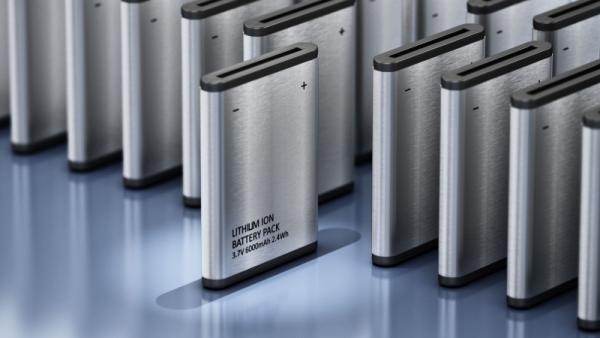Global lithium supply and Australia’s role
cigdem / Shutterstock

Marina Yue Zhang, Associate Professor – Research, Australia-China Relations Institute, University of Technology Sydney |
This article appeared in the Australian Institute of International Affairs’ blog, Australian Outlook, on June 15 2023.
Lithium is both a critical element and strategic resource as nations strive to achieve their decarbonisation goals. Amid increasing geopolitical tensions, nationalism, and protectionism, investments in strategic resources are subject to security reviews to assess potential political risks and safeguard national security interests. Such scrutiny reflects the growing importance of protecting critical resources and assets as countries strive to maintain their sovereignty in an uncertain global environment where trust and adherence to a rules-based order are diminishing.
China currently dominates the global lithium supply chain with over 60 percent of processing capacity, 65 percent of lithium-ion battery component manufacturing, and 77 percent of battery manufacturing. The concentration of the lithium supply chain in China has raised concerns in the United States (US) and the European Union, resulting in a shared priority of reducing dependence on China in their respective industrial and trade policies.
Accounting for 55 percent of global lithium production – with 96 percent of it exported to China in 2022 – Australia holds a significant position in the ‘de-risking’ effort of the US-led Minerals Security Partnership, which aims to strengthen commercial ties between strategically aligned nations. Australian Resources Minister Madeleine King has emphasised the importance that Australia participate in this alliance. Jim Chalmers, Australia’s Treasurer, has called for caution and selectivity in foreign investments in critical minerals. While not explicitly stated, it is evident that Australia intends to impose restrictions on investments from China in critical minerals. At the recent G7 Summit in Japan, President Joe Biden and Prime Minister Anthony Albanese reached an agreement to build an independent supply chain for critical minerals. As part of this agreement, Australian companies will have the opportunity to benefit from US subsidies if they establish value-adding facilities within Australia.
Building onshore lithium processing facilities in Australia can provide benefits such as reduced shipping costs and job creation. However, it requires significant investment in building processing technology and waste management facilities. Meanwhile, aligning with the US-led alliance could risk escalating tensions with the potential for retaliation from China. But, accepting China’s investment and technology for onshore lithium processing may raise concerns about aligning with China’s political identity.
The definition of ‘likemindedness’ and the alignment of interests in foreign investment have become subject to debate. Tianqi Lithium, a Chinese company, portrayed itself as a ‘likeminded’ foreign investor during its attempt to acquire equity in ASX-listed Essential Metals (ESS), emphasising its potential contribution to Australia’s moving up the value chain. However, this interpretation contradicts the evolving understanding of the term held by Australian politicians and the public, which is more narrowly focused on political identity.
Benefits and costs
Within this competition, a primary concern is that China will leverage its dominant position as a geopolitical 'chokepoint,’ similar to the way Russia did over energy resources during its invasion of Ukraine. However, reciprocity is also true in a chokepoint strategy due to interdependence. Possessing eight percent of known global lithium reserves, China relies on imports for about 65 percent of its lithium production. This dependence exposes China to its own potential chokepoint. In this respect, Australia plays a pivotal role in China’s supply chain security.
The fear of being ‘strangled’ in the supply of lithium has led to a growing security dilemma – nations strive to secure a stable and uninterrupted supply for decarbonisation efforts; however, this pursuit could trigger a cycle of competition for production and processing capacity, potentially resulting in redundancy in the supply chain and, more importantly, increased pollution.
The US, despite being a major consumer of lithium batteries, has limited control over the global lithium supply, with only one percent of known lithium reserves. To ensure energy security during the clean energy transition, the United States is actively pursuing strategies to strengthen its position in the lithium supply chain. This may involve decoupling or de-risking strategies that come with economic, social, and environmental costs but can provide advantages in terms of global influence, political leadership, and technology sovereignty compared to China.
While clean energy technologies like solar panels, wind turbines, and electric vehicles offer carbon-neutral benefits during use, their production processes can have a substantial environmental impact – lithium extraction and processing, for example, is energy-intensive and can contribute to carbon emissions. A recent opinion article in Nature highlights the importance of considering the entire life cycle of clean energy technologies, from production to application, to effectively mitigate their environmental impact.
Driven by the need for energy security and its commitment to achieving its carbon peak and carbon neutrality goals, China has made remarkable strides in developing clean energy technologies over the past decade. Notably, China has gained a significant advantage across the supply chain. This competitive edge has been achieved through substantial investment in research and development, but also significant environmental costs. In 2022, China’s investment in clean energy technology exceeded – by more than 50 percent – that of all of the G7 nations, plus South Korea, and India, combined. China is strategically investing in future technologies, including the full cycle of lithium production. Chinese lithium giants are constructing solar power stations for clean lithium extraction in South America, and Chinese researchers are working on battery recycling technologies and exploring new materials and innovative processes in battery making.
Riding on an established wheel or inventing a new one?
When it comes to fighting climate change and the urgent need for action, nations have the choice to build upon established technologies or explore new ones. Countries need to adopt an open-minded approach and avoid repeating past mistakes that have harmed the environment in the search for sustainable solutions. This requires a global effort based on collaboration and cooperation, transcending political divisions. China, as a developing country, has benefited from technology transfer and foreign investment during its industrialisation. In the emerging area of clean energy transition, it has gained first-mover advantages, although it has incurred significant costs, especially environmental damage. Chinese investment is often referred to as ‘red capital,' indicating the potential for political influence, particularly by its state-owned enterprises (SOEs) in foreign investment projects. Though most of Chinese lithium companies are private businesses, they are still collectively categorised as red capital, and not viewed as likeminded investors. It would be short-sighted to reject Chinese technologies and investments solely on the basis of political divisions. Instead, countries should learn from both the successes and challenges of China’s experience to achieve their decarbonisation goals.
For Australia, it is important to go beyond simplistic policies and carefully assess the benefits and costs of joining a US-centered geopolitical bloc in the lithium supply chain. Such a decision could have repercussions, including retaliations and disruptions in global supply chains and trade. Moreover, it is crucial to both fully assess the environmental consequences and carefully calculate the necessary investments in technology and infrastructure in order to develop a strategic plan that benefits Australia, contributes to global decarbonisation efforts, and promotes the well-being of humanity.
Author
Dr Marina Yue Zhang is Associate Professor – Research at the Australia-China Relations Institute, University of Technology Sydney.

